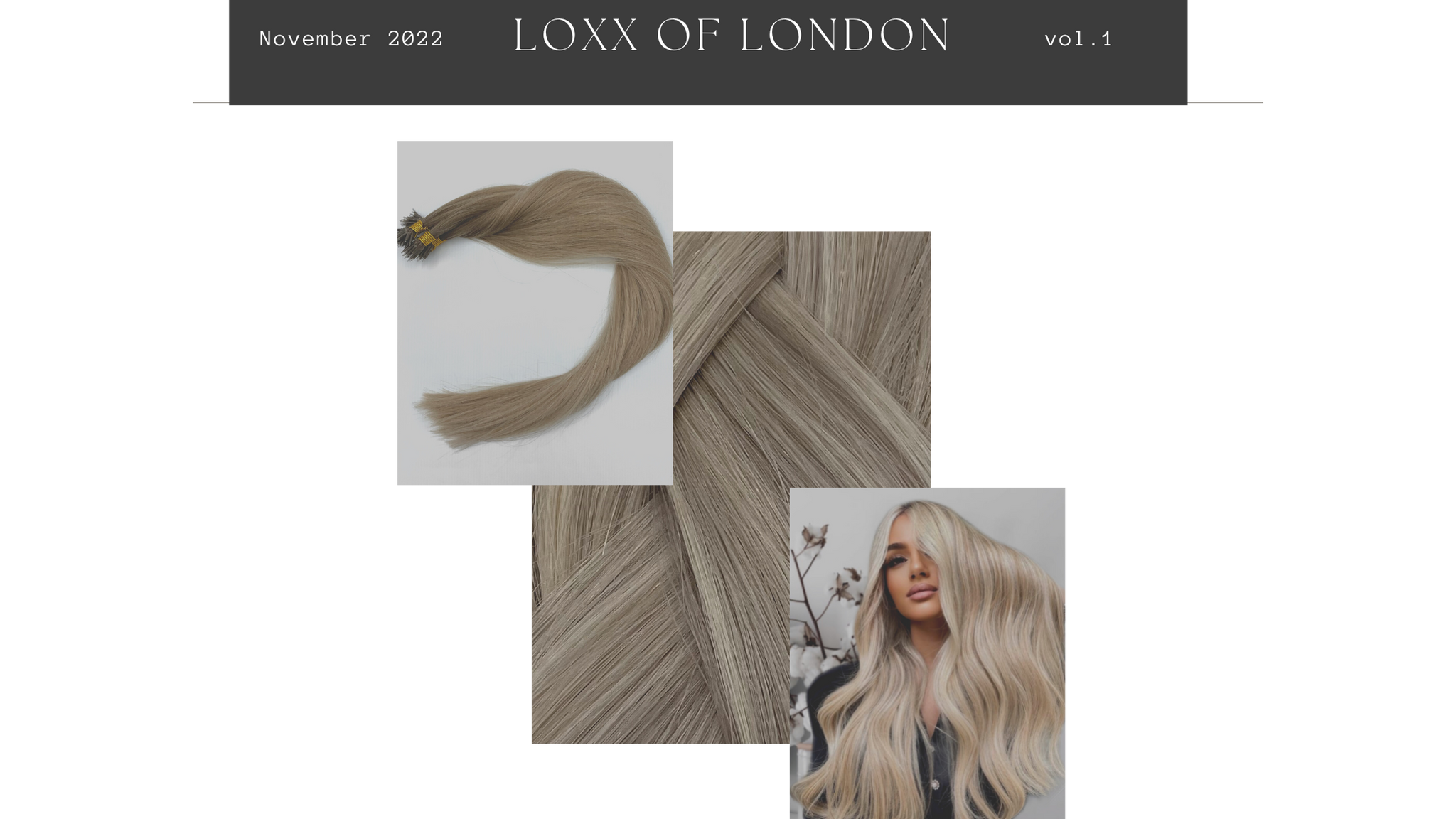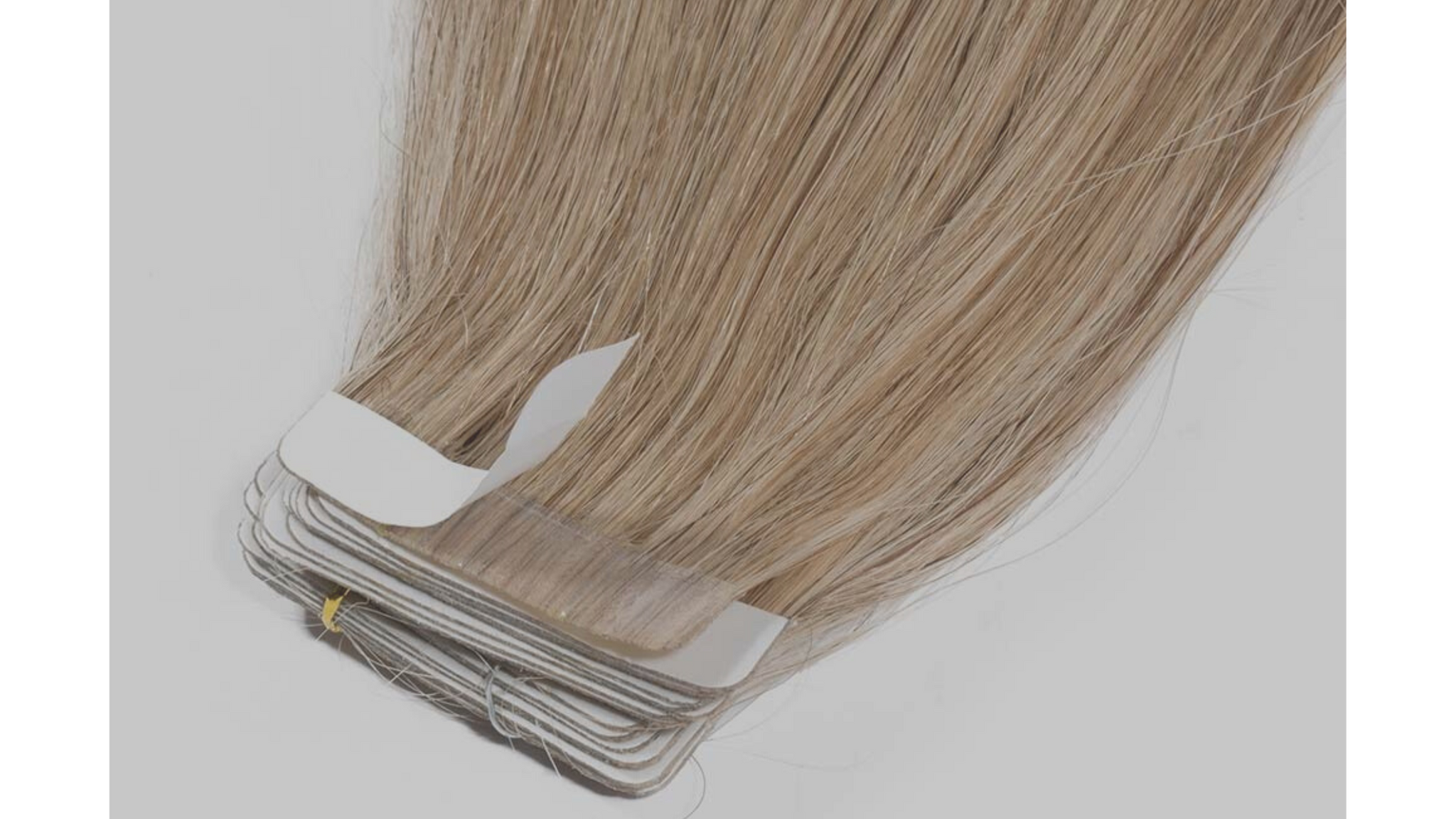The world of hair extensions

This article delves into the world of semi-permanent hair extensions such as Wefts, Nano Rings, Micro Beads and Tape-in hair extensions.
We explain the different types of hair extensions and the pros and cons of each, so you can decide which method is best for you. There’s no such thing as one size fits all; there is always the option of trying a hybrid, using two methods to achieve the desired results.
 Wefts:
Wefts:
Weaves are a long weft of hair sewn together at one end, so you have a continuous “track” of hair. Machine-made is the best for glueing because the glue sticks well to the wider sewing area and tends to be thicker for better hair density. Other wefts, like hand-tied and the new genius weft, are finer and are best for sewing in a weave when you want to keep the bulkiness at the root to a minimum.
Weaving/Weft hair is used for:
- Tipping with keratin/glue
- Weaving
- Braiding
- Making Clip-in Extensions
Wefts are customisable in the application; they can be sewn into a braid or beaded track or connected solely with beads; the list is endless.
Wefts are an excellent way to add lots of volume and length to your hair.
Maintenance -
Depending on your natural hair growth, you must have your weave re-positioned approx. Every 6-9 weeks.
Pros:
- Natural looking and lightweight.
- Comfortable and undetectable.
- Can use oil-based products on the scalp.
- No heat or glue is required for an application.
Cons:
- Genius Miracle wefts have a slightly higher price point.
- It can cause traction alopecia if applied incorrectly
- Tension points systems can lead to hair loss from traction alopecia.
- Damaging for women with thin fine hair and a shallow follicular funnel.
- Not suitable for women experiencing active hair loss.
- A complex system to learn as it involves sewing, and application can take several hours.
- If the hair extensions are not washed regularly, bacteria can build up and cause infection.
- Extensions may be uncomfortable and tight and cause headaches after application.
The World of Hair Extensions
Budget: $1,200+
The cost depends on the hair and stylist’s application fee.
 Individual Cold Fusion Application – Micro & Nano:
Individual Cold Fusion Application – Micro & Nano:
Often referred to as Nano-Tip/Ring or Micro Bead/I-Tip Hair – This hair is pre-bonded with a metal, plastic or thread loop attached using tiny beads. The tips are patterned in neat brickwork rows around the head, and the beads are coloured to match your natural hair.
Due to their minimal visibility, they can be used on the whole head, including high up on the crown. The beads can be easily moved up or down the hair during a maintenance/removal visit, as no heat or glue is used during application.
The main difference between nano and micro is the size of the bead. Nano rings are around 90% smaller than micro rings and are about the same size as a ballpoint pen nib. Microrings are not advised for women with thin/fine hair. Fine hair will struggle to cover a micro ring but will be able to cover a nano ring.
Maintenance -
Hair extensions are to be re-positioned approx. Every 6-8 weeks, depending on your natural hair growth.
Pros:
- Since the extensions are individual strands, the hair moves slightly more naturally.
- The application uses no heat or glue.
- Hair is reusable.
Cons:
- One of the timeliest methods of hair extensions, with a national average application time of 4-6 hours, whereas experienced stylists can complete it in 2-4 hours.
- Beads or locks can be visible if not placed appropriately and will slip more easily than any other method.
Budget: $1,000+
The cost depends on the hair and stylist’s application fee.
 Tape:
Tape:
Tape-in hair Extensions are applied by sandwiching the natural hair between 2, 4 cm strips of hair extensions they attach by a clear polyurethane glue. They can be used higher up the crown than keratin tips and work great when hair is very delicate and has trouble holding other types of extensions. Removal and clean-up can take longer than the original application.
Tapes are considered one of the quickest and easiest hair extension methods to apply—application averaging under an hour for a full head.
Maintenance -
Hair extensions are to be re-positioned approx. Every 6-8 weeks, depending on your natural hair growth.
Pros
- Fast Application
- Lightweight
- Suitable for most hair types
Cons
- No Ideal for wearing up
- Removal can be tedious, with a tacky, sticky residue remaining on the hair
- It can be tricky to reuse.
Budget: $800+
The cost depends on the hair and stylist’s application fee.


Leave a comment